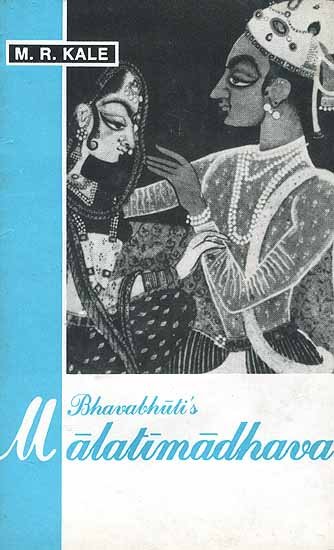Malatimadhava (study)
by Jintu Moni Dutta | 2017 | 52,468 words | ISBN-10: 8120813057 | ISBN-13: 9788120813052
This page relates ‘Food and Drink in the Malatimadhava and 8th-century India’ from the English study on the Malatimadhava of Bhavabhuti:—A Prakarana type of Drama in ten acts revolving around the love-story of Malati (from Padmāvatī) and Madhava (from Vidarbha). This study discusses the history of its author and the literary, social, religious, historical and cultural aspects of the Malatimadhava.
Part 3 - Food and Drink in the Mālatīmādhava and 8th-century India
Food is the principal need of life for all living beings. Without food no living being can subsist. In the Mālatīmādhava, although Bhavabhūti has not provided enough information in regard to food and drink of his time, yet a little information has been gathered here.
Bhavabhūti had made mention of some fruits. Among them pomegranate was a fruit of his time. In the 9th act when Mālatī disappeared Mādhava could not bear the separation from Mālatī. He stayed in the forest and noticed the different activities of monkeys and said that they had raised the face of his beloved and imprinted a kiss upon it. The face of which has tiny teeth tinged with her red lips and its temple region reddish like the kāmppilaka flowers, resembled a pomegranate burst open and became red when ripen.[1] Mango was another fruit of Bhavabhūti’s time. In the 3rd act kāmandakī said that Mālatī was truly sole essence of tenderness and the five-arrowed god was unmerciful towards her and the season was adorned by the delightful light of the moon and the mango blossoms were shaken by zephyrs blowing from the Mālaya mountain.[2] Again when Saudaminī arrived at Padmāvatī having flown from the Śrīparvata she said that the large area of Sylvan mountain was fragrant with the bilva fruits.[3] .Thus different kinds of fruits were eaten by the people of 8th century A.D.
There was a reference of one vegetable namely garlic. In the 5th act it was found that Kapālakuṇḍalā went to the temple of Karālā which was in close proximity of the spacious cremation ground. It was also indicated to be in front of her by the smoke of the funeral piles having the smell of garlic fried with the old oil of the nimba seeds [4] .Hence garlic was used as vegetables during Bhavabhūti’s time. Apart from these, during the time of Bhavabhūti betel chewing was common habit among the people of India. In ancient literature various customs associated with the use of betel are found. The betel is used in each and every Hindu ritual as a token of love etc. It is used to strengthen the body and dispel diseases arising from the phlegm.[5] In the 6thact of the Mālatīmādhava, it was found that Mālatī’s attendants had given rise to a confused noise by singing aloud the sweet auspicious songs. They uttered indistinctly in consequence of the expanse of their cheeks being filled with rolls of betel-leaves chewed sportively.[6]
In the very beginning Bhavabhūti has himself mentioned that his ancestors were drinkers of soma.[7] Liquor or drinks are common to all ages. During the time of Bhavabhūti also wine drinking was in vogue. In the 1st act of the Mālatīmādhava, Bhavabhūti had used the word madirā where it was said that a swarm of bees gathered together on the clusters of buds of a young bakula tree being attracted by the agreeable odour of the scent of wine spreading about.[8]
Footnotes and references:
[1]:
Mālatīmādhava, IX.p.190
[2]:
[3]:
etāścacandanāśvakarṇakesarapāṭalāprāyatarugahanāḥpariṇatamālūrasura bhayoaraṇya giribhūmayaḥ /
Ibid., IX.p. 177
[4]:
[5]:
kāmaṃ pradīpayati rūpamabhivyanakti /
saubhāgyamāvahati vaktrasugandhitāṃ ca//
ūrjaṃ karoti kaphajāṃśca nihanti rogām/
tāmbūlamevamaparāṃśca guṇān karoti //
Bṛhatsaṃhitā, 77-35
[6]:
imāḥsavilāsavalitatāmbulavīṭikāpūritakapolamaṇḍalā bhogavyatikaraskhalita madhuramaṅgalakolāhalai.... /
Mālatīmādhava,VI.p.122
[7]:
somapīthīnaḥ somo latāviśeṣo hutaśeṣo vā tatpāyinaḥ /
Mālatīmādhava,I.p.7
[8]:
tatracetastatataḥparikramyāvalokyacapariśramādullasitamadirāmodamadh uraparimalā./
Ibid,I.p.25
